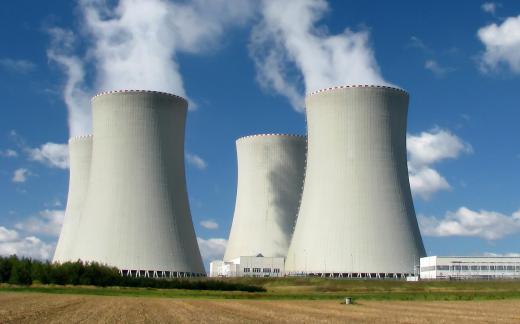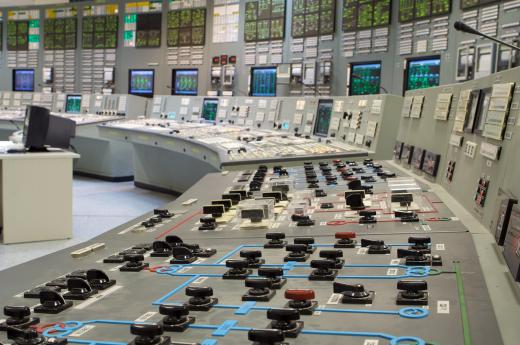Nuclear decommissioning is a series of steps which must be taken when operations at a nuclear facility are ceased. Operations may be halted because a facility needs to be replaced, because the facility has become too dangerous to use, or because it is no longer needed. Because nuclear facilities can contain hazardous materials, it is important to make sure that the site is carefully decommissioned, both so that it can be repurposed for another use, and for the safety of future generations.
Nuclear decommissioning can be performed by companies which specialize in handling nuclear facilities, along with government agencies. The first step in the process is determining how the site should be decommissioned. If the site is to be fully decommissioned and dismantled, this will free up the land for other uses, which makes it desirable. In other cases, a site may be mothballed, decommissioned to a point of safe storage and then returned to later to finish the job. Finally, the third option, entombment, involves securing the site for long-term storage of dangerous materials.

A great deal of administration is involved in nuclear decommissioning. Once the site is identified as a candidate for decommissioning, planning is carefully conducted, along with a complete survey of the site to identify any and all dangerous material. Once the facility has been safely closed down, the process of removing or securing dangerous material can begin. Immediate full nuclear decommissioning also includes dismantling the buildings in addition to hauling away dangerous material.

The lifespan of a nuclear facility can vary, depending on design, intended purpose, and usage patterns. Because decommissioning is costly and time consuming, modern facilities tend to be built to last, with the goal of making them highly serviceable so that they can last for 50 years or more without needing to be taken down. Older facilities had a much shorter lifespan, and in a some regions of the world, there are mothballed nuclear facilities which have not yet been fully decommissioned, posing significant safety and security threats.
One issue which arises during nuclear decommissioning is what to do with the nuclear material that is hauled away. This material needs to be securely and safely stored to prevent leaks or acquisition by dangerous people and organizations. In some communities which handle storage of radioactive materials, sale of storage space has been controversial, as citizens protest that their communities are being treated like nuclear dumps.
Ever since she began contributing to the site several years ago, Mary has embraced the exciting challenge of being a About Mechanics researcher and writer. Mary has a liberal arts degree from Goddard College and spends her free time reading, cooking, and exploring the great outdoors.

